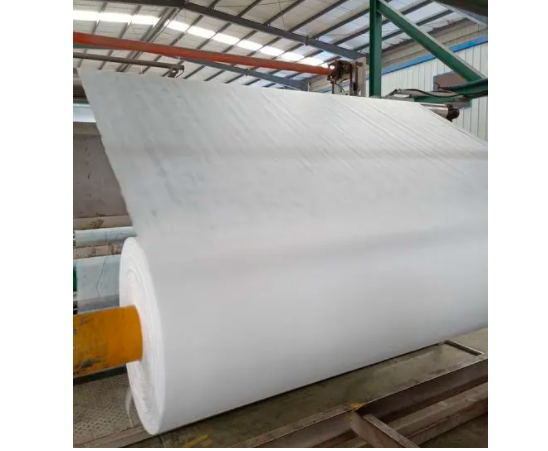- Understanding the Role of Geomembrane Liners in Waste Management
- Innovations in Geomembrane Liners for Water Management
- Geomembrane Liners: A Comprehensive Guide
- The Future of Geomembrane Liners in Civil Engineering
- Geomembrane Liners: Enhancing Landfill Stability
Manager:
WhatsApp:+86 177 0135 2670
Tel:+86 177 0135 2670
Email:marketing@okorder.com
Address:3rd Floor, No.2 Building, No.1 Sanlihe Road
The Marvel of Non Woven Geotextiles: Understanding Their Role in Modern Engineering
Modern engineering is a tangled web that has been enhanced with any material innovation, which shapes building and the environment. Non woven Geotextiles are one of such materials that have become universal and fundamental in various civil engineering projects. Made from polymers including polypropylene, polyethylene, polyamide, polyester among others, these synthetic fabrics serve different purposes like soil reinforcements and erosion control.
The Versatile Nature of Non Woven Geotextiles
Non-woven geotextiles are not typical textiles; they’re engineered fabrics for particular use in geotechnical engineering. They are strong as well as pliable since their unique fabrication process involves bonding of fibers by mechanical means or through chemicals or heat. This removes the need for weaving or knitting thereby allowing for the creation of clothes with specific characteristics designed to suit several assignments.

Filtration and Separation: The Unsung Heroes
One of the major reasons why nonwoven geotextile is used is because it helps in filtration and separation process. They act as a barrier to migration of soils into adjacent materials such as drainage aggregates while allowing water to pass freely through them. This dual functionality becomes critical when constructing roads to ensure there is no mixing up between layers leading to road failure hence long term stability and performance.
Reinforcement: A Stronger Foundation
Non-woven can really help a great deal when it comes to reinforcement work on soft soils due its strength and dimensional stability. These fabrics spread loads over larger areas by increasing shear strength thus mitigating failures. This kind of reinforcement is particularly important where structures are built upon unstable ground or at sites prone to landslides.
Drainage: Managing Water Flow
Another vital application area for nonwoven geotextiles lies in managing water flow around construction sites. Their permeable nature allows water to drain through, reducing the risk of water-logged soils or structural issues that may arise from such. This is quite important in landfills where proper drainage is vital for containment and management of leachate.
Erosion Control: Protecting Our Lands
In many construction projects especially those near water bodies or on slopes, erosion becomes a critical concern. Non woven geotextiles serve as a protective layer which keeps soil particles from being washed away by flowing water thus preventing erosion. This protection ensures the integrity of slopes, riverbanks and other areas susceptible to this process.
The Emotional Connection: Why We Care About Non Woven Geotextiles
As an engineer, I have seen various projects transformed by nonwoven geotextile applications firsthand. It somehow feels great to see these textiles resisting nature’s forces in order to give stability and safety to our built structures. However, they are not just materials but silent keepers of our infrastructure.
The Human Element: Safety and Sustainability
Use of non-woven geotextiles goes beyond enhancing structural integrity; it has a deep link with human safety and ecological balance. In case we ensure that slopes are strengthened to avoid landslides occurring; we protect people residing near them. At the same time, we are maintaining our topsoil through erosion control and lessening environmental burden on our worksites.
The Future: Innovation and Advancement
As much as the future of non-woven geotextile is bright, it is also exciting. The progress of research and development may lead to more sophisticated materials having better characteristics. For example, nanotechnology opens up new opportunities for making increased separation, filtration and absorption properties in geotextiles required for various geo-environmental projects.
The Challenge: Overcoming Obstacles
Besides their numerous advantages, non woven geotextiles face obstacles to their use. Lack of awareness about possible areas of application and shortage of skilled workers who can install them is likely to impede their wide adoption by most users. At the same time project planners must think about the cost implications as well as maintenance needs for these supplies.
Conclusion: A Fabric Interwoven with Our Future
In conclusion, non woven geotextiles are not just fabrics; they are the strands that bind our civil works projects to this planet giving them strength, permanence and environmental friendliness . These structures are not just objects we create; they serve as a permanent monument to our greatness built through ages. It’s not only “non woven geotextile” but an assurance towards a safer world; one which is secure from any form of instability or destruction except by natural forces.
Let us think into tomorrow – when marveling on such tissues contributes significantly to our ever changing engineering field.
- Previous:The Great World of Fabric Geotextiles: A Personal Journey Through Their Uses and Importance
- Next:The Unseen Guardians: The Role and Impact of Geotextile Fabric Non-Woven in Modern Infrastructure






